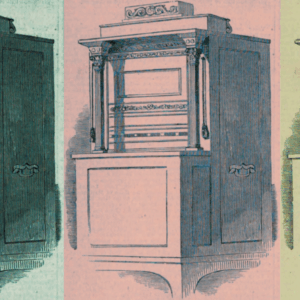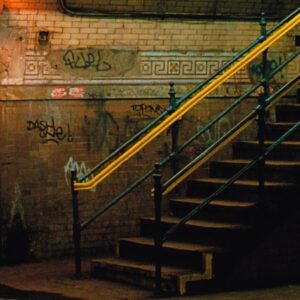
Shadow City, Invisible City: Walking Through an Ever-Changing Kabul
Taran Khan on Life in an Uncertain Afghanistan
It comes in waves.
On my phone: Three missed calls and several voice messages, hours before the last evacuation flight leaves Kabul. My fingers falter between scrolling through and forwarding messages, stopped short by a little girl’s face on my screen.
Tayyaba is at the airport in Kabul, in the middle of the botched evacuation of Afghans by the United States and its allies. Her mother’s name is on the list of evacuees but hers is not. Neither is her brother’s or her grandmother’s. Her mother, Shazia, is divorced and has spent years working with different organizations in Kabul to help vulnerable Afghan women. None of these employers have turned up to support Shazia in this dire moment and she sees no other way for her family but to flee the country.
I was sent Shazia and Tayyaba’s information by their relative, my friend, an Afghan now living in Europe. Was there anyone who could help get them through the barricades? Anyone who could get their names on the list? On a plane? Should they wait where they were, in a sewage ditch under the blazing sun? Or should they go back to a city controlled by the Taliban; go home to a home that is profoundly changed?
*
My first return to Kabul was in the autumn of 2006. It was August, a time that a friend had told me was the most beautiful season in the city. The toot (mulberry) trees are bright with color, he had said. You can see them everywhere.
It was a time that was not quite war and not peace. Over the next few years, I would walk through the city and watch the seasons turn. I saw arghawan trees blossom in spring and spent summer weekends on picnics with friends. On Christmas I saw the streets emptied of their customary rush of Land Cruisers, as most consultants and international staff departed for the holidays.
Sometimes the safest way to protect Afghanistan’s heritage was to leave it buried.
In the years that followed the security situation progressively worsened. I watched as the international community and the Afghan government withdrew behind sandbags and boom barriers. Concrete walls topped by concertina wires took over entire thoroughfares, dividing the city into a cruel hierarchy. If there was a blast in their vicinity, these walls were likely to turn the impact outwards, towards those on the streets.
I recognize these same walls again now in the images from Kabul airport, including those of Tayyaba’s family. Keeping thousands of Afghans at bay, cutting them off from the flights departing to safety.
In 2013, on my last journey to Kabul, most of my conversations with friends revolved around the formal end of the NATO combat mission, scheduled for the next year. Their talk was of departures to other cities, of different lives in faraway places where they could envisage a future. A future that had vanished for them from Kabul.
Kabul changed years before the Taliban entered the city on August 15th, 2021, and yet in the news and in mainstream narratives, I find it presented as a surprise.
Walking through Kabul then, I had found it to be what one historian has described as an “amnesiac city”—a place where the past is obscured below the surface, leaving few visible traces. Writing about Kabul, I had also collided with its periodic, deliberate invisibility; how it appeared and vanished to the outside world. Now you see it, now you don’t. Surprise, I find, is another word for wilful forgetting, a different shade of amnesia. A way to talk only of those who were “saved,” rather than those who had no choice but to remain.
*
In Italo Calvino’s Invisible Cities, Marco Polo describes city after city to the great ruler Kublai Khan. Some of these, or all of these, could be real. Or they could be fictions, places existing only in the imagination of the listener, or of the narrator. They could be stories woven by them both.
One of these is Eusapia, a city that exists in reverse below the earth, as a city of the dead. Reading Calvino’s description of these mirroring terrains, above and below the ground, I think of Kabul on a spring day in 2013, seen from a hill in the Graveyard of the Pious Martyrs, the Shuhada-e-Saliheen. This valley on the southern edge of the city is dotted with Muslim shrines and pilgrimages now, but it has been hallowed ground for over 2000 years. Where I stood, on Tepe Naranj, or Orange Hill, a team of archaeologists were excavating the remains of a Buddhist monastery, raising steps and prayer chambers from the Kabuli earth.
Around the site, the city circled closer. Houses were being built between the graves. Wire fences protected the excavations from the creeping sprawl of habitations. From this vantage point, Kabul’s diverse past lay revealed to me as if on the pages of a book, as though to prove it existed. I think of that spot now, under the control of the Taliban, and of the rueful reality faced by the archaeologists, that sometimes the safest way to protect Afghanistan’s heritage was to leave it buried.
Walking through Kabul, I had found it full of ghosts. What I had not known was that they were whispering of the future.
Wandering through the graveyards and monuments of Kabul, I had found few formal memorials to the upheavals of its recent past. The city has changed many times without leaving traces on its terrain. But it is also possible to see it in reverse, to find that there are, in fact, few things that do not serve as memorials in this city. In the middle of a crowded Soviet-era apartment complex, for instance, stands a shrine to a young woman chased to her death by local militia during the civil war. A ruined cinema, an empty spot at a table, a missing father’s photo on a wall. Like Calvino’s city of Eusapia, below the Kabul of the surface that is unmarked by memory, exists a Kabul of remembering.
*
My grandmother, who had grown up in northern India in a home marked by rigid gender segregation, told me how she used to listen to the poets who frequented the male quarters of her house through cracks in the wall.
In the days after the Taliban’s takeover, I listened to Kabul through cracks in the silence that descended on the city. In the voices of friends I could reach on the phone, and behind their fear and their laughter, their assurances and their hesitating requests, I heard the streets and the soundtrack of the city’s everyday life, away from the transient media glare.
I listened, for instance, to the transformed cadences of my friend Suhail’s voice, as he talked to me about finding a way to leave Afghanistan. He had not left his house for a year. The international agency he worked for had not responded to his emails asking for help in getting evacuated. Through a well-placed friend, he managed to get evacuation papers a day after the Taliban seized power. But despite having all the documents needed, he could not make his way into the airport.
Once, Suhail told me, his son fainted in the crowd. On another occasion, his family was beaten by the Taliban guards outside the building. The last time, he managed to get seats for his family on a bus that he was confident would be allowed past the barricades. He sent me a selfie from this bus, smiling at the camera with his wife and kids. They narrowly escaped the blast that ripped through the premises.
I read and watch the media coverage. In these breathless stories I hear of thousands of Afghans being “saved,” and of millions being “left behind.”
As I read these stories I find Kabul being erased in front of my eyes. Because what such narratives are saying is this ending was preordained. That violence in Afghanistan was inevitable. That despite all the efforts to save them, Afghans could not be saved. And now, it was time to go home, to leave these same Afghans to carry on with what had become their war.
History repeats itself in this land, or so we are told. Colonial-era battles are juxtaposed with current events. It strikes me that for a terrain that is so heavily inscribed, Kabul is also remarkably empty, colored in shades the contemporary reader wishes to see. Like its physical landscape, bombed and flattened and remade again and again, the city is an empty stage, a tabula rasa on which the fantasies of departing armies and saviors are once again played out.
Such stories, I find, are a way of erasing the city’s past, because a city without a past is also a place without a future, a place it is possible to look away from, to care for only intermittently and not too deeply. It is a place of inevitable, never-ending war; a form of violence that implicates no one. Such stories, I find, are comforting lies. The important part of these stories, the part to pay attention to, is to whom they are offering comfort.
Nowadays Kabul appears in flashes on my screen, already part forgotten, a month into the Taliban’s takeover. I glimpse the city in fragments, in the images of internally displaced people living in tents in the Shahr-e-Nau park, in the slogans of women protesting on the streets, in the text that Suhail sent me, apologizing for having lost the almonds he was carrying as gifts.
As I spoke to Suhail I heard the voices of his children, and from outside, from a street I had only to shut my eyes to see—its path to a shrine, a cinema, trees—I heard the tinny distorted voices of an official announcement from the new government. I heard the voice tell Kabulis to stay at home, to stay calm.
*
On my phone now: questions.
Roya, a TV producer friend, asks me if I can get her on “the list.” She is unsure of the precise details of this list, but is certain that it exists, that it has the names of people who are deemed worthy of evacuation. Could she and her family be counted among them?
Around her, she heard women saying, “Good, run. The Taliban is coming to sort out women like you.”
In the last 20 years, like most Kabulis I know, Roya worked with a wide range of donor agencies and NGOs. On WhatsApp she sends me a steady stream of certificates and contracts and letters of recommendation. All emblazoned with the logos of responsible, respectable agencies. All of them absent from the present scene. Roya had written to her former supervisors, she told me. They had not replied.
Through her impressive CV, through her love for her work, Roya now fears she has placed her family at risk. She worries that she is on the Taliban’s list of collaborators. A list much longer than the one of those who will escape. She fears a knock at her door.
*
On the television:
“My fellow Americans, the war in Afghanistan is now over,” declares the new American president.
“Thanks to God,” says the Taliban, “the war is over in the country.”
At the end of each phone conversation, my friends’ collective refrain: “Pray for us.”
*
On my phone, a message from an artist in Kabul:
The day the Taliban entered, she was in Shahr-e-Nau, an upmarket suburb. When she heard the news, she began running home. She was wearing a chadori, a garment she is not accustomed to, and as she ran she exposed her denim-clad legs. Around her, she heard women saying, “Good, run. The Taliban is coming to sort out women like you.”
Had it always been there, this Kabul, waiting to emerge?
*
I began writing about this amnesia in my book Shadow City: A Woman Walks Kabul to safeguard against forgetting, words a talisman against erasure. A reminder to myself as much as to readers that the city of beauty and complexity that I had seen did indeed exist.
I keep those friends who are still able to place calls on the phone longer than I should; I talk to them even when I sense they want to say goodbye.
Among the places I left unseen, that I wanted to return to Kabul to visit, is the stream of Khizr. I think of him often these days—a mystical figure who appears in the Islamic tradition to travelers and to those facing troubles. He is the guide dressed in green robes, whose advice befuddles his companions because it seemed so strange, sometimes even cruel. But his deeds, we learn, are not to be questioned, because Khizr can see what we cannot. He has knowledge of the consequences of our actions. Which is the opposite of where Roya and Suhail have found themselves, the place where Shazia has led her family—a place of unforeseen consequences.
The chashm-e-Khizr lies in Shuhada, and in the densely written and rewritten terrain of this valley I think of a different list etched onto the Kabuli soil. I think of all the lives unlived, all the destinies that could have been, the paths that could have been taken had there been no war. Lives that only Khizr can see. A life where the artist does not destroy her paintings, fearing the Taliban will come knocking at her door. A life where Tayyaba does not return to the house of her relatives, because Shazia does not feel safe returning to her own home. Where the family does not move into the empty rooms of their relatives who were allowed on the flight, who were now in a refugee camp in Europe, two decades after they returned to Afghanistan after living as refugees in Iran.
In the reckoning of war, and in the reckoning of this so-called peace, is there a list that takes these lives that have never been into account?
*
The last flight from Kabul departed. Suhail was not able to get aboard. He searched to find a route to get out of the country by car. Please don’t call me for the next few days, he adds, I will tell you when I get there.
Millions will do what they did in the previous cycles of war: walk.
In a video from 1993, I watched images of Kabul from the era of its civil war, a conflict that was so invisible even the then-US president was surprised by its existence. In his book Ghost Wars, American journalist Steve Coll described a CIA agent trying to discuss the conflict in 1991 with George H.W. Bush. “Is that thing still going on?” Bush senior is reported to have said.
In the footage, a man is standing on a street in Kabul, speaking to the camera with desperate urgency. “In Kabul there is no peace,” he says. “We ask the United Nations, please if you can take our voices to the UN, tell them to help the Afghan people because they are also human.”
Walking through Kabul, I had found it full of ghosts. What I had not known was that they were whispering of the future.
*
On my phone now: obituaries.
The man who had told me about Kabul’s mulberry trees in autumn. Killed in Panjshir in the season that he loved.
The next day, I get a message from Suhail, who has reached a third country. Now, he was trying to find a way to leave for Europe. He would let me know when he arrived, he said.
One morning I woke from a dream in tears. In the dream, I had been walking around with a deep wound in my body. I was weeping not from pain or fear, but because no one could see me bleed. Or they could see but didn’t seem to care.
I keep those friends who are still able to place calls on the phone longer than I should; I talk to them even when I sense they want to say goodbye. I dread their news, worry about learning of fresh tragedies or difficulties. But what I dread more is the thing looming over the horizon, the cloud that is gathering in the wake of the planes leaving, the cameras departing.
What I dread the most is their silence.
The names in this essay have been changed to protect identities.
Taran Khan
Taran N. Khan is a journalist and writer based in Mumbai. She grew up in Aligarh and was educated in Delhi and London. She has published widely in India and internationally, including in Guernica, Al Jazeera, The Caravan and Himal Southasian and has received fellowships from the MacDowell Colony, Jan Michalski Foundation and Swiss Arts Council Pro Helvetia. From 2006 to 2013, Khan spent long periods living and working in Kabul. Her first book, Shadow City, won the Stanford Dolman Travel Book of the Year Award and the Tata Literature Live First Book Award for Non-Fiction.












